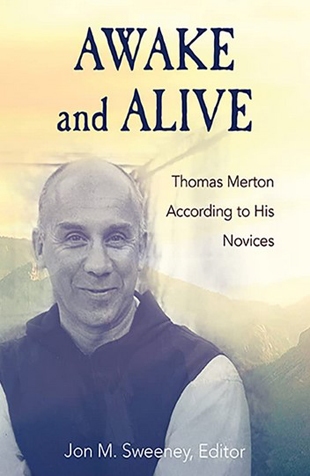For those unfamiliar with the work of Jon M. Sweeney or Thomas Merton, this book may serve as an appetizer for a larger meal to come. Seasoned readers of Sweeney or Merton may find this more like dessert. For all of us, this should challenge our biases when we think we’ve already figured someone out. People — even those we know well — still have much to reveal.
Sweeney is a regular contributor in these pages, and a winner of several of S&P's "Best Spiritual Books" awards over the years, including last year for Feed the Wolf.
Writings by and about Merton could fill a library. His letters, journals, spirituality books, and prophetic works have long been in print. Secondary sources about his life and relationships to others are equally voluminous. He is one of the most important Christian wisdom teachers of the last century, and part of the Remembering Spiritual Masters Project.
What makes Awake and Alive different is an insistence on seeing Merton as a teacher and guide to monks as they began their journeys at the Abbey of Gethsemani, where both the famous monk and these six novices lived together. This is a collection of interviews conducted with the novices. The interviews were previously published in a yearly publication of the International Thomas Merton Society, although one of them has been expanded for the book.
There are helpful biographies of each of the six novice-authors at the back that help provide further context to their reflections of who Merton was in their lives. There are also a few black-and-white photographs by Paul Quenon, OCSO, who is well-known in Merton enthusiast circles.
In his introduction, Sweeney identifies Merton’s way of being in the world as “distinguished by insight, awareness, and imagination.” Quenon then echoes this by saying: "One of Merton’s chief qualities as a person [was] that he was a man of the imagination as well as the spirit."
We see Merton in all his complexity and as someone who took his role as an educator seriously. Timothy Kelly, OCSO observes: "He didn’t want to gather disciples around him. He was always very objective in his teaching and if someone showed a bit of interest in his own person, who he was and so on, it was generally a sign that the person wasn’t going to be around that much longer. It was just a part of his desire that he, Merton, not be attracting them to the monastic life but rather that the novices find their own basic monastic identity."
The great spiritual teacher is present here too, in anecdotes and sayings that we haven’t previously had in books. A novice remembers: "During a conference on St. John of the Cross, Fr. Louis [the monastic name for Merton] once said to us, 'One thing about the dark night of the soul is you don’t know if you will get through it.' " This is different than how spiritual writers often talk about a “dark night” today.
A beautiful teaching appears when Merton is celebrating an outdoor Mass with some nuns visiting the monastery: "When it came time at the Offertory to pour a drop of water into the wine chalice, he reached up, plucked a leaf from a tree and shook the dew drops into the chalice."
Another novice remembers his teacher for his immense, even complicated, creativity: "Merton was always growing. That would be one of his weaknesses, even as a Novice Master. He didn’t repeat himself. He was always having new visions or new ways of seeing things."
At least twice, Merton is remembered as being "really alive." The title of the book originates in these quotations. (See the excerpt accompanying this review for one of them, centering around the practice of being present.)
This book should help anyone to understand that Merton was many things, but most importantly a person who sought to help others encounter God personally.
_____
Reviewer Anthony Nuccio is a theology teacher, campus minister, and member of the Chicago Chapter of the International Thomas Merton Society. He lives in the suburbs of Chicago with his family.
